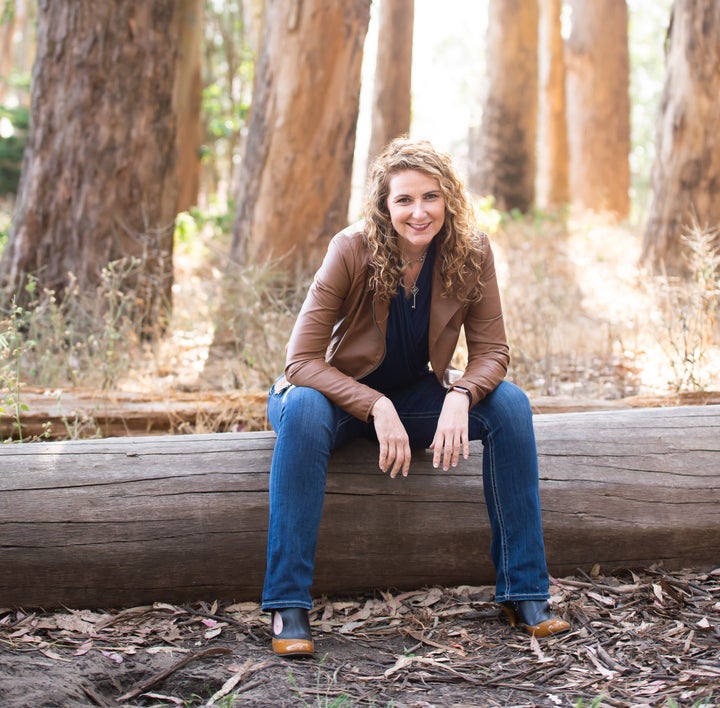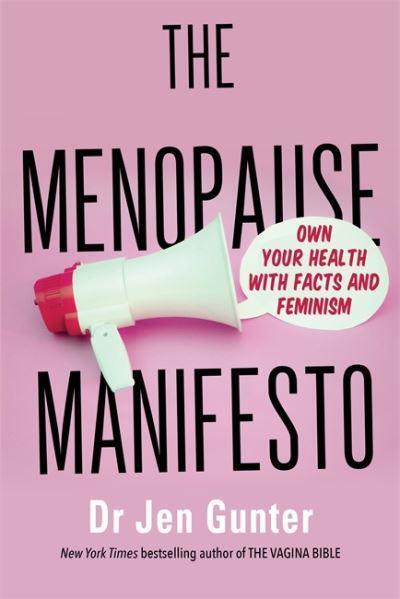The menopause is having a moment. It’s only taken 200 years since the creation of the word...
First, Davina McCall shared her experience of night sweats, vaginal dryness and more in a no-holds-barred documentary, then Sophie, Countess of Wessex got in on the act, revealing her mind went blank during a royal appearance due to menopause-induced brain fog. And now, Dr Jen Gunter is here to with a new book, The Menopause Manifesto.
Dubbed “Twitter’s resident gynaecologist,” Dr Gunter found fame when she began de-Gooping the internet, taking down wellness gurus like Gwyneth Paltrow with humour and cold, hard facts, and telling us all the things we really don’t need to putting anywhere near our vaginas.
Her latest mission, is to teach women “your awesomeness is unrelated to your oestrogen,” with a book dedicated to teaching us everything we need to know about menopause – and un-teaching us the patriarchal tosh that stops us getting help.
“For women to navigate menopause, they need facts because empowerment requires accurate information,” she says. “But they also need feminism because our bodies, our medical care, and even our thoughts have been colonised by the patriarchy.”
The book is a deep dive into the facts of menopause with plenty of trivia – like the fact that the only other mammals known to have menopause are toothed whales such as killer whales or orca. Chimpanzees, our closest relative, also stop ovulating around the same time as humans, but die soon after.
But animal knowledge, as fun as it is, is not all that applicable to our own lives. So instead, here are seven things we learned that might be:

1. ‘Menopause is puberty in reverse’
Before we get into the nitty gritty of the menopause, we need to understand the basics. As Dr Gunter puts it: “menopause is puberty in reverse – a transition from one biological phase of ovarian function to another”.
Menopause occurs when there are no more follicles in the ovaries capable of ovulating, meaning there are no more eggs. The average age when this happens is 50-52 years old.
“At the start of puberty there are approximately 300,000 immature follicles with oocytes (eggs) in the ovary, and by menopause one thousand or less remain, but they’re no longer capable of ovulating,” says Dr Gunter.
The “menopause transition”, as she calls it, is the time leading up to the menopause when symptoms occur, but you might still have periods. In the US, doctors refer to the FMP, or the final menstrual period, as the start of “menopause”.
But different language is used in the UK (as well as other countries), which all contributes to the confusion around what menopause is.
In the UK, doctors tend to use the term “perimenopause” instead of “menopause transition” and instead of logging the FMP, they consider that a woman has entered “the menopause” when she’s had one year without periods. Anything after that date is considered “post-menopausal”.
2. There are two stages to perimenopause
The menopause transition/perimenopause can occur over a number of years and has two phases: the early phase, and the late phase.
“During the early phase a woman is likely to see some of her cycles lengthen by seven or more days or she may even skip an occasional menstrual period,” Gr Gunter writes.
“The late transition in the biology of menopause is characterised by more skipped periods—meaning sixty days between menstrual periods. When a woman starts skipping two menstrual periods in a row there is a 95% chance her final menstrual period will be within the next four years.”
Symptoms such as hot flushes or insomnia often start in the later menopause transition, but there is no hard rule here—some women have symptoms earlier than others. Our hormones are to thank for the cocktail of symptoms.
“One of the defining features is the dramatic drop in oestrogen levels as the follicles are the main source of oestrogen,” Dr Gunter writes. “It’s the drop in oestrogen that causes many of the symptoms and medical concerns unique to menopause; however, there’s new research that suggests other hormone changes... are also important.”

3. Language matters
The way we talk about menopause plays a part in how women feel and experience it, writes Dr Gunter. She questions whether the word itself – specifically the phrase pause – suggests that women should be holding back or slowing down at this time of their life.
“Many cultures manage just fine without the word menopause. In Danish and Norwegian the word is overgangsalder, meaning age of passage or age of changing. In Finnish the term is vaidhevoudet, change of year, in Swedish it’s klimacterium, change or stages of life, and in Japanese the word is 閉経期 or koneki, which translates to change of life,” she writes.
“There is some research that suggests women in cultures that don’t use the word menopause may suffer less during their menopause transition. This doesn’t mean that changing a word will change whether a woman has hot flushes or vaginal dryness, but perhaps when a society publicly embraces menopause as a change as opposed to a dreadful disease there are downstream effects.”
4. The age of your first period changes nothing
If a woman starts menstruating earlier she will not enter menopause earlier – the average age of menopause is the same whether the period starts at age nine or age fourteen, explains Dr Gunter.
“Think of the first menstrual period as a hose that was turned on for a time to fill a bucket and the last menstrual period as the timing of menopause – the consequence of a small hole that drained the bucket,” she writes. “Emptying the bucket is not a reverse of the process used to fill it with water.”
It’s a misconception that women who start periods earlier will have earlier menopause, as research has shown it is not the number of menstrual cycles that contributes to the loss of follicles, rather, it’s the number of follicles lost with each cycle that matters. Studies to date suggest our genetics have the biggest influence on this, followed by smoking habits and other lifestyle factors, but more research is needed.
5. Hot flushes are caused by a dodgy internal thermostat
Perimenopause is about far more than hot flushes; symptoms can range from joint ache to insomnia, anxiety, depression, headaches and more. But there’s a reason people talk about the flushes a lot – they impact 80% of women.
So, what causes them?
“A hot flush happens when a wonky inner thermostat informs your brain that you’re hot when you are not,” writes Dr Gunter. “Thermoregulation – the control of body temperature – happens deep in the brain in a region called the hypothalamus. Various hormones and neurotransmitters work together, receiving signals from the body and the environment, to keep body temperature in a relatively narrow zone.”
It’s not just the oestrogen levels that matter when it comes to hot flushes, otherwise girls would have hot flushes before puberty. Instead, a hot flush “depends on a brain that had oestrogen and then that oestrogen is taken away. The faster the drop, the more profound the effect”.
It makes sense then, that the best treatment for hot flushes is to take oestrogen-boosting hormone replacement therapy (HRT).
6. Periods get heavier during the perimenopause
“The amount of blood lost with each menstrual period often increases during the menopause transition, which comes as a surprise to some women,” says Dr Gunter. “Some women may have an episode of massive bleeding during the menopause transition, so much so that urgent or emergent care is needed.”
She calls this a “super soaker event” and says that if you’re soaking through two pads an hour for two hours, it’s time to get medical help.
7. The vagina and vulva go through changes, too
The vulva (the external organ) and vagina (internal organ) undergo significant changes either directly from the lack of oestrogen or indirectly because of the reduction in blood flow to the tissues during the perimenopause.
“Collagen production also decreases with age,” says Dr Gunter. “Collagen is a protein that, among other things, gives tissues their strength and stretch, so the loss of collagen with menopause and age leads to increased tissue fragility and decreased elasticity.”
Interestingly, the clitoris also reduces in size with age and the amount of erectile tissue also decreases, but whether this is age-specific or oestrogen-related isn’t
known. The most common symptom associated with menopausal changes is vaginal dryness, but other symptoms include vaginal burning or a sandpaper-like feeling, pain with vaginal penetration, vaginal and vulvar itching, irritation with wiping after using the toilet, decreased lubrication with sex, a change in odour and a change in discharge.
To ease symptoms, Dr Gunter says you need to refresh yourself on what you should and shouldn’t put near your vagina: don’t use fragranced products or wipes as these increase irritation, but do moisturise with coconut oil or un-fragranced petroleum jelly. You can also buy vaginal oestrogen at most pharmacies to ease symptoms.
The Menopause Manifesto: Own Your Health with Facts and Feminism by Dr Jen Gunter is out now.